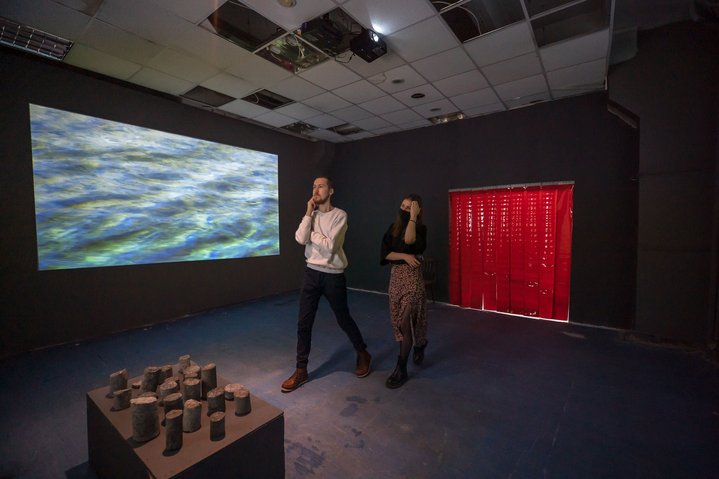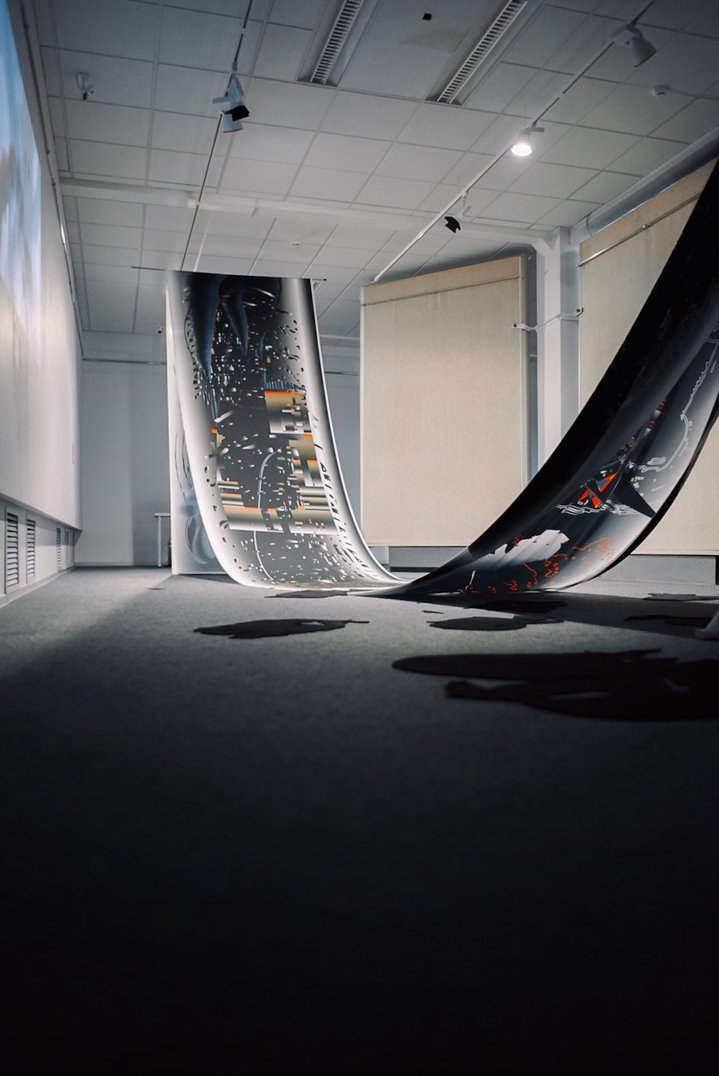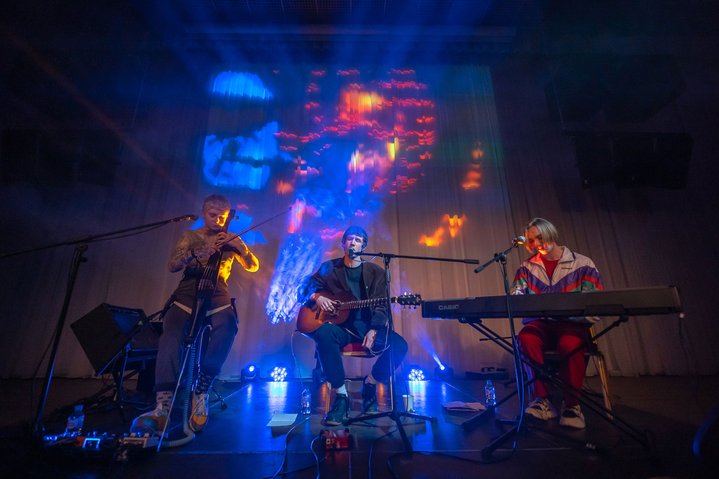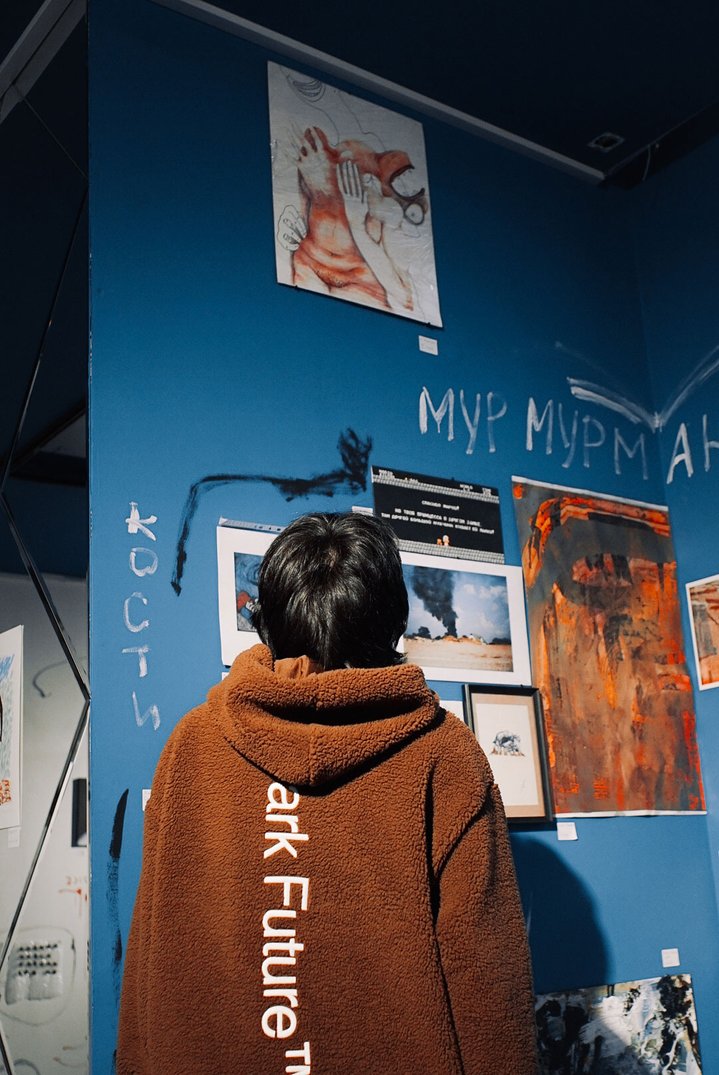Where art defies the dark and cold
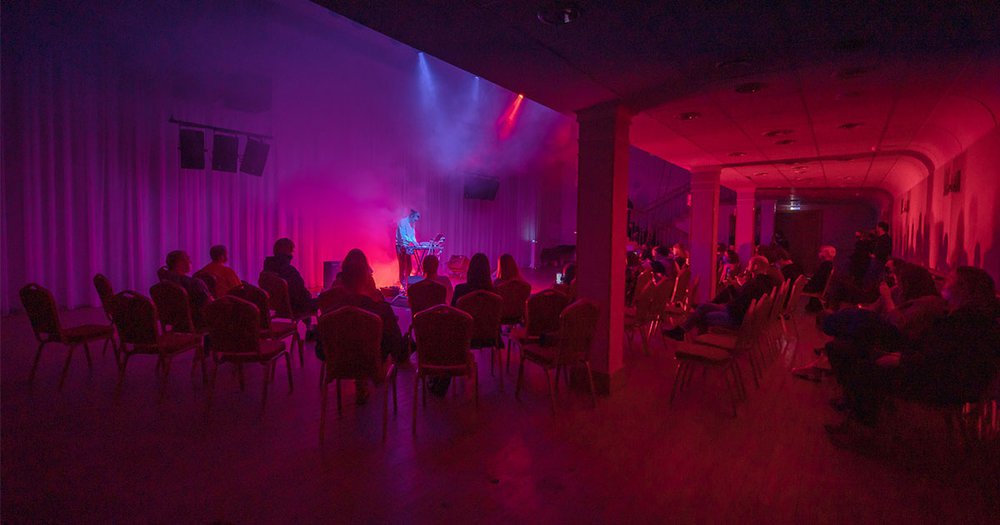
With the absence of light, the Inversia festival in Murmansk appeals to the inner warmth of the inhabitants of the Polar Circle.
Inversia, described as an “uncomfortable festival beyond the Arctic Circle”, has just had its fifth edition in Murmansk curated by the group Fridaymilk. Echoes of this anniversary edition of the festival, which, until now, has perhaps been better known in Northern Europe than in Russia, resonated throughout the whole month. A large group exhibition titled ‘Northern Digital Path’ was held in the spaces of the Murmansk Regional Museum of Art until February 27. The programme also included two exhibition projects off the back of two festival residencies, ‘Murmansk Prospekt’ and ‘Nolanders’; an exhibition of speculative graphic design by the Fictional Documentation Lab called ‘Imaginary atlas’ and jam sessions of participants of the Lab of Field Recordings in the scientific library. There was also a conference and concerts in different venues around the town. All of these initiatives sought to reinvent the image of the polar industrial single-industry town and capital of the Arctic as a new international cultural hub.
The bright artificial light beaming from the windows of the basilica-like hall of Murmansk Regional Art Museum, where the main exhibition of the festival took place, can be deceiving. Less than a month has passed since the end of the polar night, which in Murmansk lasts from the beginning of December till mid January. However, it was still dark in the streets and, as museum workers joked, not all locals had yet come out of their winter sleep, so there were far more visitors and art professionals from other regions of the country than Murmansk natives at the festival.
The illumination of the main city avenues in the form of the shimmering northern lights and the natural glow of the Arctic snow covering all the trees with hoarfrost was the first thing that caught your eye when you arrive in the city, so it is no wonder that working with light and the traditional negative perception of darkness has become one of the main curatorial and artistic focuses. Audiovisual installations and a sonification lab for urban light formed part of the interdisciplinary programme. The participants of this lab, led by Russian media artist Boris Shershenkov, tried to create a multi-channel sound installation inspired by the city lights of Murmansk.
But it seems that the festival curators’ main focus was on the inner light and warmth of the people who live here: hospitality manifested itself most clearly both in the careful treatment of the guests received in the festival office and in the open-ended, relationally aesthetic performances at the opening, in one of which artist Julia Levin treated everyone to a fermented meal, representing her own interpretation of the traditional cuisine of the Russian North. Central to the exhibition were two artworks that used the image of a net: fieldfishing by Olga Zubova; Ekaterina Volkova and Hooligan Electronics reinterpreted the traditional northern fishing industry and manual labour of net weaving; while ‘Small fish, Big fish’ by Philip Guseev, created as part of the Sweetness of Life residency held by the festival team last year, provided a visual commentary on the rapid endorphins experienced by social media users and suggested an imaginary alternative communication network. The concept of the ‘northern Digital Road’, chosen as the main theme of this year's festival and exhibition, suggests the same thing: to present new social, cultural and economic relations in the Arctic, proposing industrial northern regions as intellectual hubs and creative centres, where artists are new tankers and transport ships, where artistic research is an inexhaustible energy resource and cloud storage and data centres are new harbours and global ports of call. In a series of linocuts entitled ‘Loss’, in which recognizable elements of the northern landscape disappear, leaving a white sheet, Olga Danilova literally erases stereotypes and deconstructs a romanticized image of the Russian North, showing the need to create a new image and a new cartography of the region. Anna Prilutskaya’s project in the genre of non-fiction, ‘The Yakutsk Train’, has no logical conclusion and literally traverses an illusory space of Northern Russia, the journey through which defies rational explanation and is woven from folk tales and the mythopoetic consciousness of traditional small peoples of the North and the Urals. The decaying and shifting landscape of the Russian North in new configurations is presented even in the visual style of the festival, created by the Shoplift collective and in the form of a complete installation composed of photographs of icebreakers, distorted beyond recognition.
Unlike Arkhangelsk, with its historical wooden architecture and legends, or Petrozavodsk, with its Karelian and Finnish identity, Murmansk is entirely industrial and artificial. It was never seen as a creative space, with its geographical remoteness and harsh climate conditions. Fighting isolation by creating a common cultural field between northern Europe and northwest Russia seems to be a very important, not only cultural, but also geopolitical, task for the festival. In a situation of increasing cultural isolationism of the country, the festival, which seems to exist against literally all odds, managed to attract leading international musicians from Finland, Norway, Switzerland, Hungary, Great Britain, Egypt and the Netherlands.






